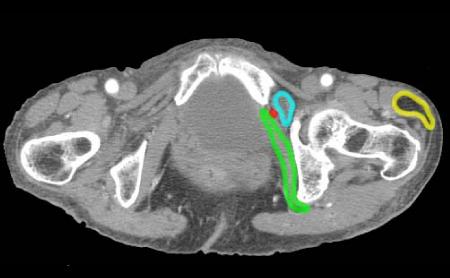PA Anatomy: Pelvis: Case 1 |
||||||
 |
|||||
The obturator foramen is a large opening, but most of it is covered by the obturator membrane. The opening through which the hernia is passing is quite small and did produce ischemia of the involved bowel loop. |
|||||
The hernia is shown in light blue, the obturator artery in red, the obturator internis muscle in green, and an incidental lipoma (fat containing tumor) of one of the thigh muscles in yellow. |
|||||